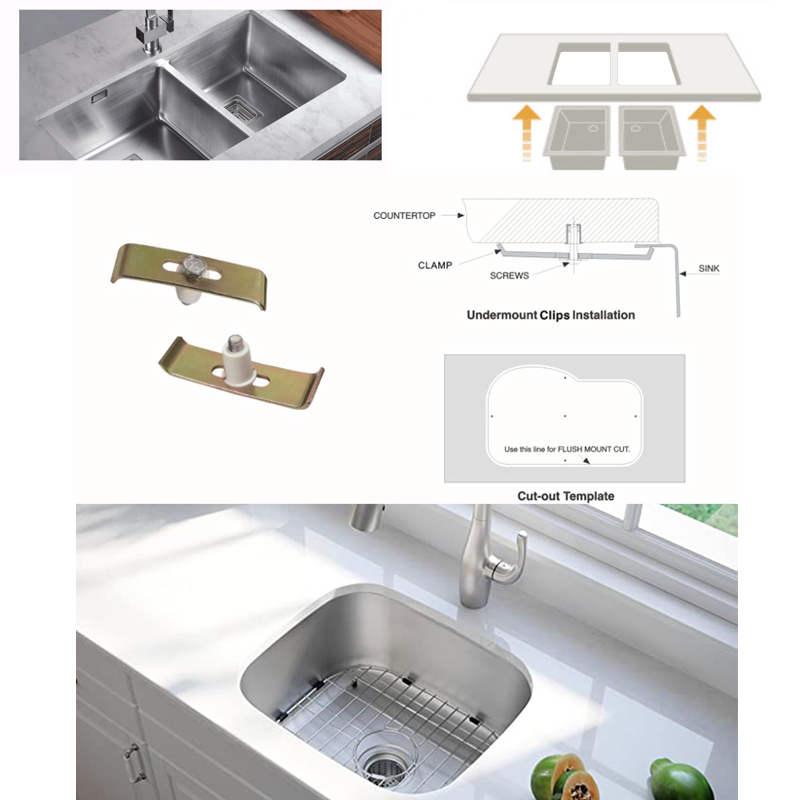Difference Between Topmount Sinks and Undermount Sinks
2020-05-30
What Is the Difference Between a Topmount Sink & an Undermount Sink?
Sinks come in an increasing variety of styles and designs. Prices vary, too. It is good to have an idea of the differences in sinks and what it costs to purchase and install them. The basic sink styles are topmount, sometimes called overmount; undermount; and tile-in. The two most frequently used are top- and undermount sinks. Cost and ease of installation may be deciding factors in choosing between undermount sinks and topmount versions, especially for do-it-yourselfers.
Topmount Sink
The lip or rim of the topmount sink rests on top of the counter into which the sink is set. The sink is supported by the countertop and braced but not supported by clamps on the underside of the cabinet. Topmount sinks do not fit deeply into the cabinet and leave room for storage beneath it. Installing this type of sink is simple and does not require any special expertise.

Undermount
An undermount sink fits flush to the counter and is supported only by brackets on the underside of the counter. The countertop must be cut out very precisely to make the sink fit. The countertop must be one solid piece, not made of laminate. Water can get into the layers of laminate where the sink meets the countertop.

Disadvantages
Both sinks have their pluses and minuses. The main problem with topmount sinks is that because the lip of the sink is not level with the counter, debris gets trapped in the crack between the sink rim and the countertop. Water and crumbs cannot be brushed directly into a topmount sink. Installation can be expensive for undermount sinks because it takes an expert to cut the countertop slab and install the sink.
Advantages
Simplicity and cost savings are the greatest advantages of a topmount sink. Many kitchen and bath sink cabinets, such as those sold in home repair big-box stores, are designed to fit standard sizes of topmount sinks. Undermount sinks have a look that pleases some people more because these sinks ride beneath counter level and do not visually interrupt the flow of the countertop. Because they meet the counter on a level, undermount sinks allow you to brush debris straight into the sink.

